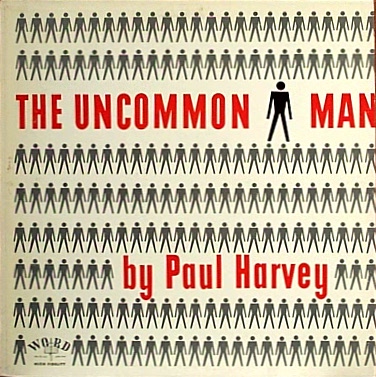It is not clear as to whether Dayna Leigh Martin has the lock on the market of ideas comprising the “Unschooling” movement, however, her meandering explanations, when put together, make it unclear to an onlooker such as myself as to whether this is viable, and if it is, whether it is something every family can do.
Well, Ms Martin is not even close to being the only one advocating unschooling. In fact, there are many in her company that have their own radical ideas.
I like radical ideas. I agree with her sentiments. Personally, I sucked at math until I was out of school and taught it to myself. That included calculus, also. I am also largely self-taught in computer languages, have built my own computers, and also have enough knowledge of my car and my moped to do minor to mid-size repairs. I am living proof that learning is just what humans naturally do, and it might appear that school is unnecessary.
But of course to say so, I misrepresent the facts. If we only look at my numeracy, technical, and trades knowledge, I clearly benefitted from unstructured, independent self-teaching. But without school I still would not have had the facility I have for literature, for Shakespeare, would never have bothered with Chaucer (but was glad someone had exposed me to it), for the importance of keeping up with current events, and for rounding out my literacy generally. Without my teachers in early school, I probably would not have had the confidence I had in adulthood to fill in my own gaps in math.
Self teaching is not for everyone. For one thing, as I understand it, only a teacher can grant credit, leading to graduation and a grade-12 equivalency to proceed to college. But even so, not everyone would have had my patience or persistence in teaching myself the basics of the math I failed to learn in the earlier grades.
Martin has confidence that if learning feels good to a child then that is the learning that should be facilitated. However, a child cannot see the future further than their own nose, and sometimes, if they want to become an oceanographer, for example, then that requries study in a surprising number of fields, many of which may seem unrelated to their topic as a child. Sometimes the learning experience may be unpleasant, since it may require the learning of things the child perceives as boring. There are many kinds of learning which may seem unpleasant at the time, but the rewards were delayed until later. I found this for teaching myself computer languages. You could try compiling a program literally hundreds of times before it would work, but once it did, it was a great feeling. There is a lot of learning that in this way, involves tolerating a great deal of frustration and not giving up. I am unsure if a child would see that on their own.
Children also change their minds, as well. Today’s budding oceanographer becomes tomorrow’s budding astronaut. Is a parent really going to follow the whims of the child around that much, or will there come a time when today’s lesson will be on “focus” and “persistence” (a lesson that the child may not want to hear)? A child in a public system can accomodate the changing of a child’s mind more easily than a parent.
Another problem I have is that for the most part “Unschooling” takes as its basis an assumption (not enitrely untrue) that schools act as enforcers of social norms and of a pecking order in society. Seen from this perspective, schools teach obedience, and there is an overwhelming consciousness that this is the way schools always were.
This is far, far from the case. Schools have been around in its present form for less than 200 years. Unschooling, as I see it, is a return to the days before organised schooling, when parents passed their knowledge and literacy, and skills on to their children. This was a necessity on the farm, as well as at the Blacksmith shop in town.
The family, thus, had an exceedingly important role that nowadays is being invaded by psychologists, psychiatrists, educators, counsellors, test-taking agencies, and even marketers, who have jointly acted to remove that power from the family. This saddens me, and in the past decade, the Internet, cell phones, and other electronic gizmos has further invaded their consciousness, even minimizing further the sphere of influence of parents. It is becoming apparent that nowadays, parents feel they have so little to pass on to their children that they become as disposable as cogs in an assembly line which must make way for next year’s model of car.
Also, children learn better in an environment where they are not judged. In a school they are passed, failed, diagnosed with ADD and the like; they compete for attention with 24 other children, and the teacher is somehow expected to reach all of them. But I don’t think that will even happen in the best classrooms of that size. In a family setting, they are more likely to be understood on their own terms and judged less often. Making mistakes becomes less of a public embarrassment and more a part of the learning process.
But not every parent believes that “not controlling” their children is the way to raise them. I can see many parents having a problem with that mentality. Obviously, you have to know what you are doing, and what is it exactly do you mean by “control”, anyway? Children have a kind of wisdom that is unburdened by later biases and indoctrinations; but at the same time, they do not have the gift of foresight and wisdom that allows parents to pass on worldly knowledge to the young which they could have not learned any other way. Far from merely facilitating learning, adults have something meaningful and worthwhile to pass on to children. Discipline is also something to pass on. It gives you the gift of pursuing bigger and better learning goals. The kind of goals you can’t achieve by digging things out of the dirt or by reading a book with pictures in it.
A child who is unschooled can only be as competent as his or her parents. The parents involved cannot be expected to be competent at all subjects. I don’t think I would be competent in all subjects either.
Judging by the blogs I’ve read on the subject, many which have not been updated for some years, for most parents the passion tends to burn out soon enough, and it becomes a fad. Dayna still practices un-schooling, and preaching the gospel to anyone who will listen. However, for whatever reason, one of her websites, http://unschoolamerica.com, has been taken down and its domain parked.
Visits: 104
Like this:
Like Loading...














 Now this is real cool. Wouldn’t you just like to go to church, and instead of those boring sermons and homilies, you instead get a preacher that knows karate, and uses it to show the power of God?
Now this is real cool. Wouldn’t you just like to go to church, and instead of those boring sermons and homilies, you instead get a preacher that knows karate, and uses it to show the power of God? It gets better. In between Crain’s homilies,
It gets better. In between Crain’s homilies,  And during Christmas Season, Swedish singer Eilerts Jul can fill in for Ingles as he returns to his loved ones for a break from sermons.
And during Christmas Season, Swedish singer Eilerts Jul can fill in for Ingles as he returns to his loved ones for a break from sermons. This blog entry was named after a 1981 album from a band from Burlington, Ontario called The Spoons. I spent a while deciding whether this album cover met my standards of crappiness for inclusion into this collection of album covers. Well, here it is.
This blog entry was named after a 1981 album from a band from Burlington, Ontario called The Spoons. I spent a while deciding whether this album cover met my standards of crappiness for inclusion into this collection of album covers. Well, here it is.
 … like this one. Paul Harvey was a radio announcer for KVOO in Tulsa, Oklahoma, his place of birth, and another fellow who had impeccable credentials, winning many honorary degrees and medals, up until 2000. He has also been given numerous awards and
… like this one. Paul Harvey was a radio announcer for KVOO in Tulsa, Oklahoma, his place of birth, and another fellow who had impeccable credentials, winning many honorary degrees and medals, up until 2000. He has also been given numerous awards and  … and these are the ones found on the female restroom doors. Well, not quite. These are more like paper doll cutouts. Maybe as a pastime, you can count the figures to see if there are really 60 of them in the illustration.
… and these are the ones found on the female restroom doors. Well, not quite. These are more like paper doll cutouts. Maybe as a pastime, you can count the figures to see if there are really 60 of them in the illustration. I was going to name this blog entry “family style”, but then I remembered that was the name of a 1990 duet album by brothers Jimmy and Stevie Ray Vaughan. It would have been an insult to SRV’s memory, I thought. So, I changed it to a straight title.
I was going to name this blog entry “family style”, but then I remembered that was the name of a 1990 duet album by brothers Jimmy and Stevie Ray Vaughan. It would have been an insult to SRV’s memory, I thought. So, I changed it to a straight title.









